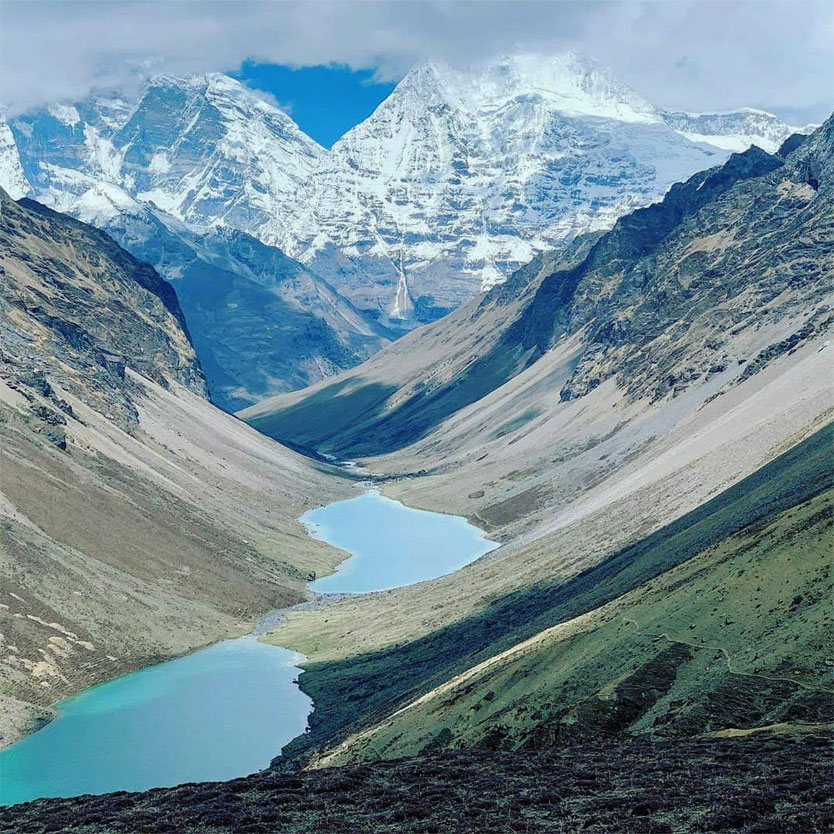
Bhutan in considered as the happiest country in Asia and the eighth happiest in the world. The country's landscape ranges from subtropical plains in the south to the sub-alpine Himalayan heights in the north, where some peaks exceed 7,000 meters (23,000 feet).
The Kingdom of Bhutan is a Land-locked country in South Asia at the eastern end of the Himalayas. It is bordered to the north by china and to the south, east and west by India. To the west it is separated from Nepal by Indian state of Sikkim. Sacred monasteries, fluttering prayer flags that line the high ridge, the red robbed Monks chanting prayer give this kingdom an aura of another time - this is Bhutan, also known to its in habitant as Druk Yul -"the Land of the Thunder Dragon".
Day 1) Arrive Paro and overnight stay
From a window seat on clear days you can experience a spectacular view of the Himalaya peaks as you approach Paro. On arrival meet with our guide and drive to the Hotel and check in and have refreshments. Later part of the day we visit the National museum. It is a temple with all the collection of paintings (Thangka) and visit Rimpung Dzong (fortress). We can take leisure walk down through cantilever bridge and to Paro town. Just beside the bridge you can witness Bhutanese national game is archery, which is played almost every day basis in the ground. Overnight we stay in Paro.
Day 2) Tiger’s Nest hike and return to hotel (exploration Day 1)
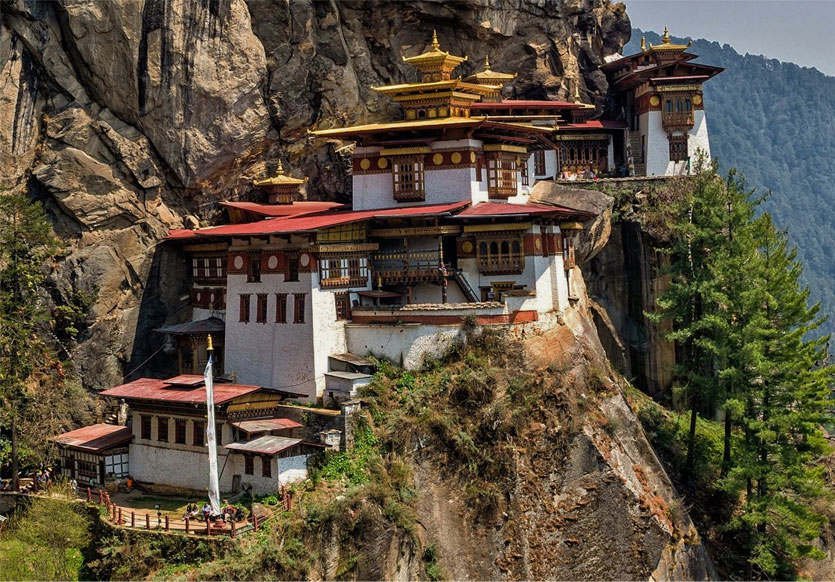
Taktshang (Tiger’s Nest) falls in “top 20 best places to visit” in the world. Paro is a valley of religion and myth. The most famous landmark, Taktsang Monastery (Tiger’s Nest), stands on a granite cliff about 1000 m above the valley. It is believed that Guru Rinpoche, a famous Buddhist saint, flew to Paro on a tigress and meditated at Taktsang. The monastery is considered a national treasure of Bhutan. The hike to Taktsang would take us around 2½ hours to reach the cafeteria, a point from where one can enjoy great view of the monastery. Those interested can walk further 45 minutes uphill to get a closer view of the monastery.
We walk down back to road. The journey downward to the road would take us less 1½ hours. We have lunch in the Hotel. After lunch take a walk in Paro Bazar for shopping. Overnight we stay in Paro.
Day 3. Paro to Jangchulakha (12.5 kms/ 6 - 7 hours) (7,300 feet t – 11,900 feet)
Our actual trek begins today. We move towards north from Paro towards Jangchulakha via Jele Dzong. Today’s trail is gentle till Jele Dzong. A clear day offers a bird’s eye view of Paro valley. We trek over a steep ascend over a ridge to get through the Blue pine and fir forests. Once we get to the ridge below, we descend to reach Jili Dzong. We rest for some time and continue with a steep ascent.
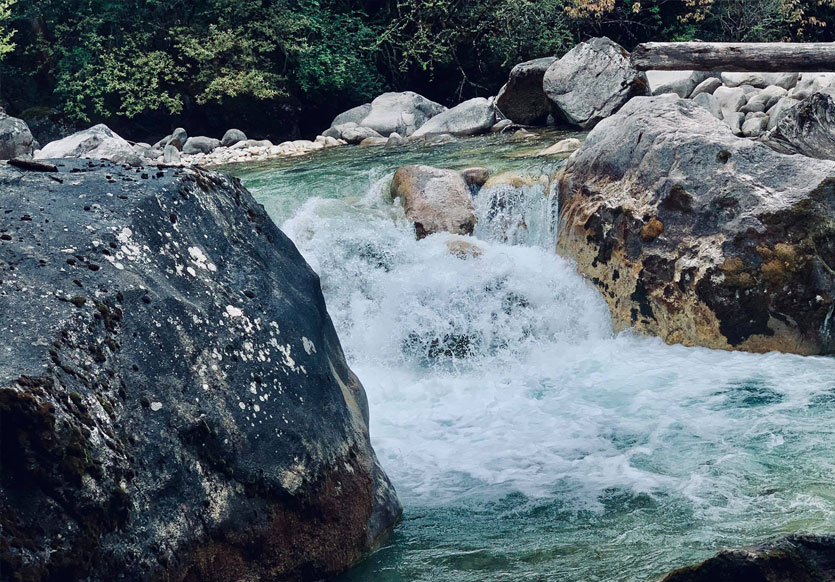
About a couple of hours the ascent becomes gradual. We trek through thick alpine forests and dwarf rhododendron trees to get to Jangchulakha. In winters, yaks graze in the pastures along the path and around the campsite. Overnight stay in the tent.
Day 4. Jangchulakha to Lake Jimilang Tso (19kms/ 6 - 7 hours) (11,900 feet – 12,750 feet)
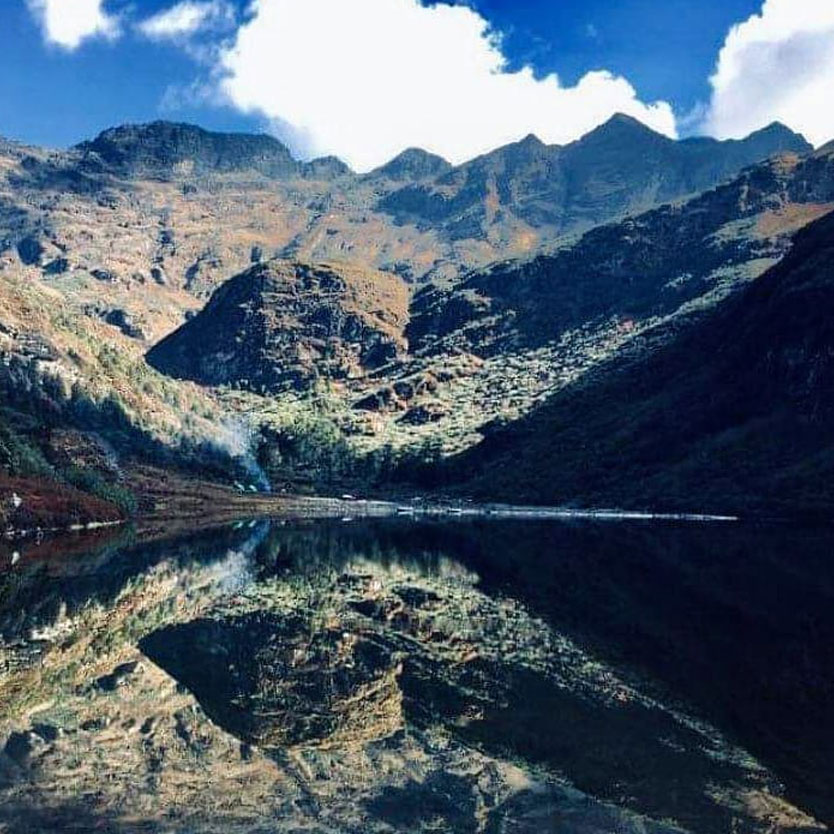
Today’s trek follows mountain ridges with spectacular views of distant valleys and mountain ranges. We have many ascents & descents before we climb the main ridge to cross over and get to the other side of the valley. We get amazing views of the Jichu Drake (6,989 meters). This peak reperesents the protective deity of Paro. We continue our trek and get to the glacial lake – JimilangTso. Our camp for the day is near this JimilangTso lake. This lake is known for its giant sized trout fish. Overnight halt in the tent.
Day 5. Jimilangtsho to Phajoding (9kms/ 5 - 6 hours) (13,414 feet – 11,950 feet)
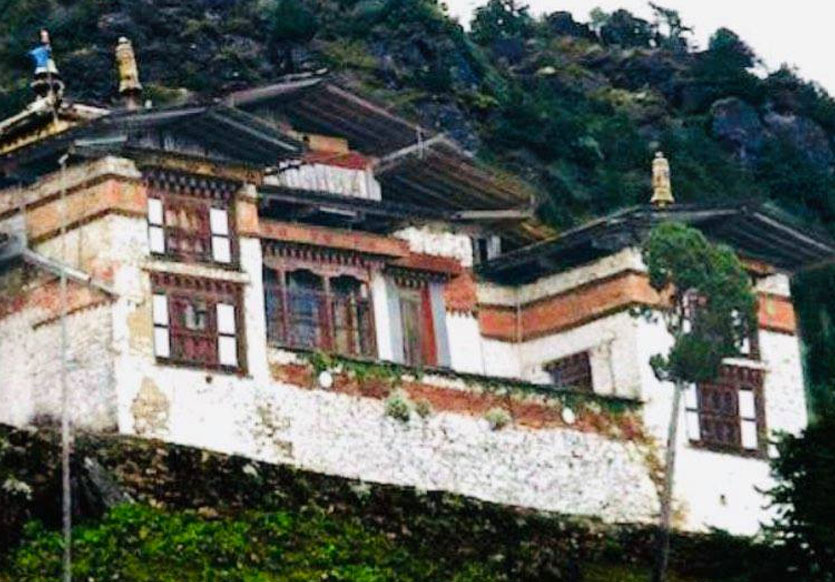
The day begins with a gradual climb. If weather permits there will be a beautiful view of Mt. Gangkhar Puensum (7,50 meters), Bhutan’s highest mountain. The Mt. Gangkhar Puensum is one of the highest unclimbed peaks in the world. The path gradually descends through the Juniper trees to get to the Phajoding Gompa where the Phajoding monastery and retreat centres for meditation are located. Our campsite is near Phajoding cafeteria.
Day 6. Phajoding to Thimpu trek (6kms/ 2 - 3 hours) drive to Paro (52kms/ 1hour 15mins)
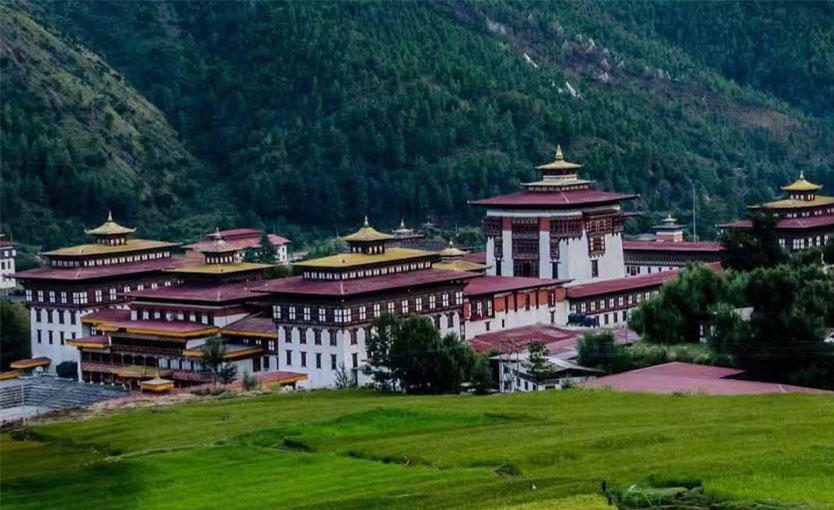
The trek to Thimphu is all the way downhill through a forested area of mostly blue pine. We have a short trek for the day and get to Thimou (The capital of Bhutan). After reaching Thimphu have lunch and rest. Later in the evening, we can viit the king’s memorial Chorten. This is a memorial to the King and a monutment to peace.
Day 7. Thimpu to Punakha via Dochu La (76kms/ 4 – 5 hours) (exploration day 2)
Today we explore the National library, an arts & craft school where the students are taught the 13 traditional arts & crafts of Bhutan and Simply Bhutan. Simply Bhutan is a living museum & studio that offers the cultural heritage of the Bhutanese people. We get to witness the ancient bhutanese infrastructure which is being preserved and promoted as one of the 4 pillars of Gross national Happiness (GNH). Post lunch we head out to Punakha valley.
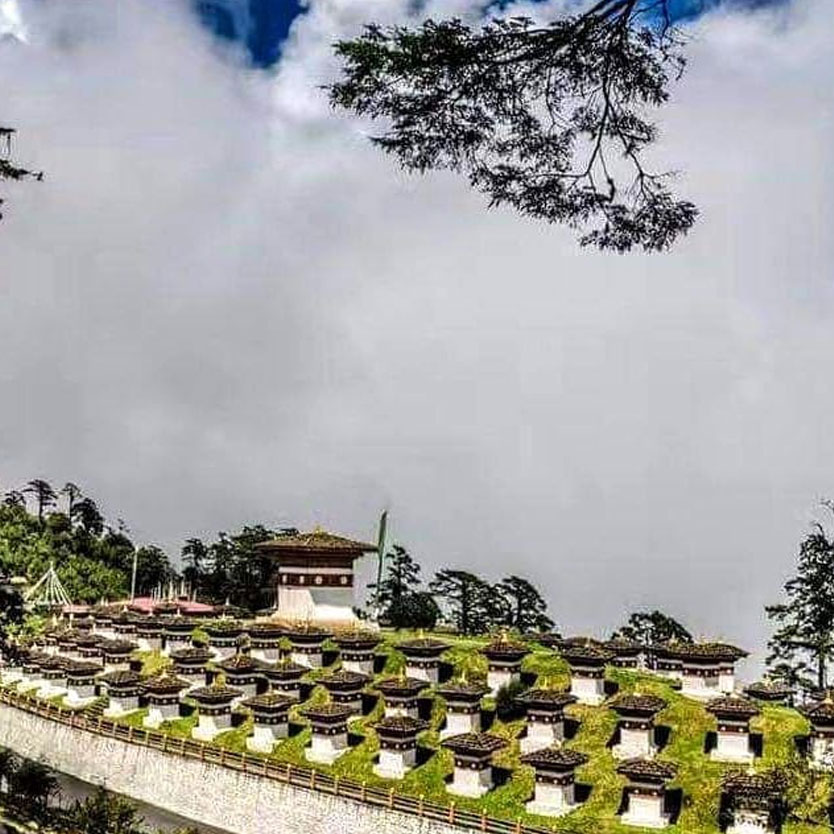
We negotiate the Dochu-La (pass) at 10,300 feet. We get to see 108 Bhutanese shirines here. From here we enjoy wonderful views of the following high altitude peaks: Gangkar Puensum (7,570 meters), Zongphugang (7,060 meters), Kangphugang (7,170 meters), Masagang (7,158 meters) and a few more.
Day 8. Punakha to Paro via Chimi Lakhang (128kms/ 5 – 6 hours) (exploration day 3)
Today we start the day by visiting the Punakah Dzong fortress. after spending some time, we start our drive to get to Paro.
We take a short excursion to the Chimi Lakhang temple on the way. This temple is also known as the “Divine Madman” for his different form and methods of teaching Budhism. This temple is also known as the temple of fertility as women come here to pray for children.
On reaching Paro we chck in relax. Later, we can visit a Traditional farm house (optional) which is about 100 years old. This house has all the traditional styles which the locals use to have in their traditional houses. Ground floor is used as a store room, first floor as kitchen where they served traditional meals and on the top floor, they have rooms to stay along with prayer room.
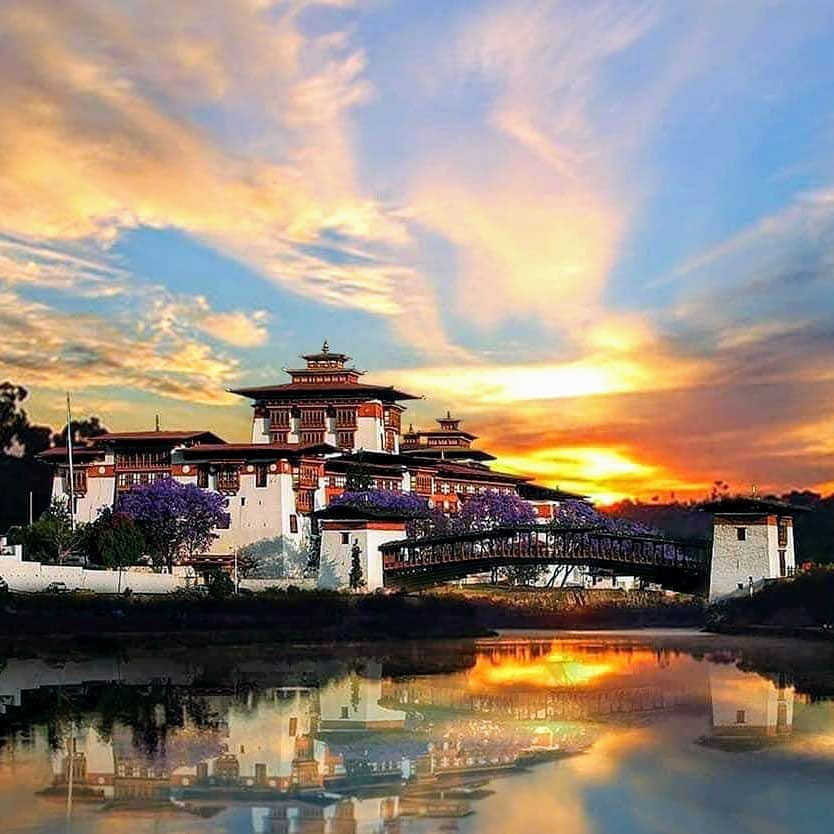
We will experience the traditional dinner in this traditional farm House where dinner would be served by the mother of the family in a house. Post dinner, we could get into a stone bath.
About Hotel stone Bath
The hot stone bath is widely practiced in Bhutan and is also a method to overcome various complications and illnesses. Many people believe they should soak in the Menchu after visiting a hot spring. Besides the modern medical facilities, most Bhutanese prefer to soak themselves in the Menchu (water with medicinal properties). Many places in Bhutan have at least a spot to perform the hot stone bath. Before the actual bathing, some fire woods are gathered from the nearby forest. Then some stones are also collected. A wooden bathtub is also needed but most spots have readymade wooden bath tubs. This particular spot has a readymade wooden bath tub. Then they pile up stones and woods together and burn them. During this process they make sure to heat the stones to red hot. The bath tub is filled with the Menchu and some Artemisia leaves are also added. They pitch tents to shelter them from the rain, sun and from the cold in the winter. Then the water is heated by dipping red-hot stones. Then two persons soak in the water at a time. After coming out from the hot water they wrap their body in a blanket and lie on a flat surface for some time. Overnight stay at Paro.
Day 9. Departure
After brekfast we check-out and head to the airport to take our respective flights, with fond and happy memories of Bhutan.
Inclusions:
1) Accommodation on twin sharing/ double occupancy in Paro.
2) All meals while trekking and cultural tour (Breakfast /Lunch and Dinner)
3) Dry ration as biscuits, chocolates, juice on trekking days
4) Comfortable vehicle – Hyundai H1/ Toyota Haice for the entire trip
5) Mineral bottled drinking water
6) English speaking tour guide for sightseeing and trekking guide while trekking.
7) Trekker’s tents, dinning tents, kitchen tents, horse for luggage, shower tent, toilet tents.
8) Well equipped medical equipment and First aid box all throughout
9) A variety of different menu in food, each day on the trek.
10) Hot stone bath and Bhutanese dinner experience in local farm-house which is around 100 years old.
Exclusions:
1. Flights/ travel into Bhutan before and after the trip
2. Any beverages other than the dry ration/any alcoholic beverages
3. Tips or gratitude for the local staff members
4. Monument Entry fee
5. Sleeping bags
6. Travel / Medical/ Health insurance of any kind
7. Museum fee
